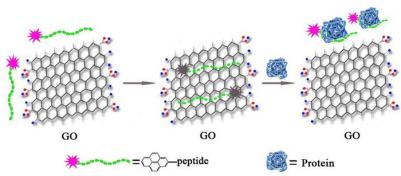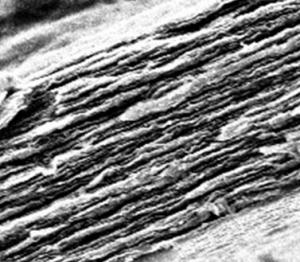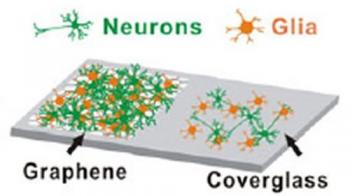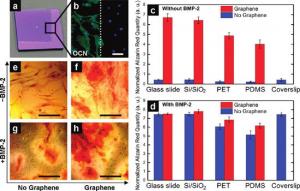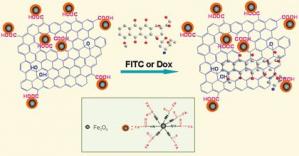Detecting protein-protein interactions using graphene
Researchers developed a new way to detect protein-protein interactions using graphene. This kind of detection is used to monitor how a disease-related protein interacts with libraries of small peptides. The idea is to mix a tagged peptide with Graphene Oxide, which quenches the fluorescent signal from the pyrene-bound peptide when pyrene stacks onto its flat surface. Then, when adding the protein that needs to be tested you can find out whether it binds to the peptide by seeing whether the tagged peptide leaves the graphene oxide and the fluorescent signal returns.
